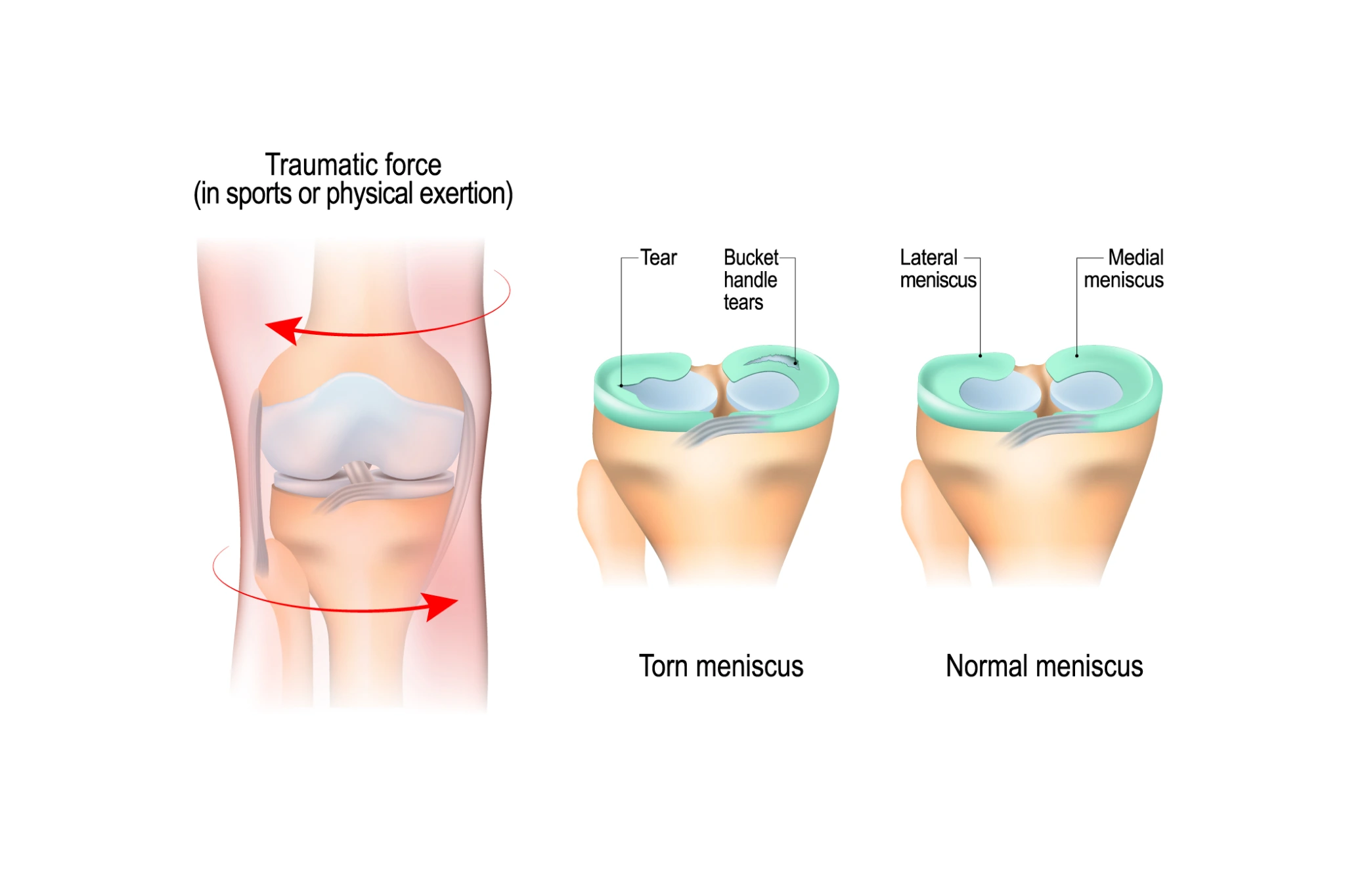We are open Monday to Saturday with extended hours
We are open Monday to Saturday with extended hours

The meniscus refers to two wedge-shaped pieces of resilient cartilage situated between the femur and tibia, acting as shock absorbers. The menisci play a vital role in distributing weight between the bones and maintaining knee stability.
Meniscus tears can result from acute trauma or degenerative changes over time. Acute sports-related meniscal injuries often coincide with other knee injuries like anterior cruciate ligament (ACL) tears and can occur with movements such as aggressive pivoting, sudden stops or deep squatting.
Degenerative tears can occur gradually over time with no significant symptoms and then suddenly become symptomatic with twisting, squatting or heavy lifting activities.
Treatment for meniscal tears depends on various factors such as tear size, type, location, age, activity level, and associated injuries. Small tears in the outer “red zone” with good blood supply may heal on their own, while tears in the inner “white zone” typically require surgical intervention due to limited blood flow. Nonsurgical treatments include:
Be the first to know about news and insights.
"*" indicates required fields